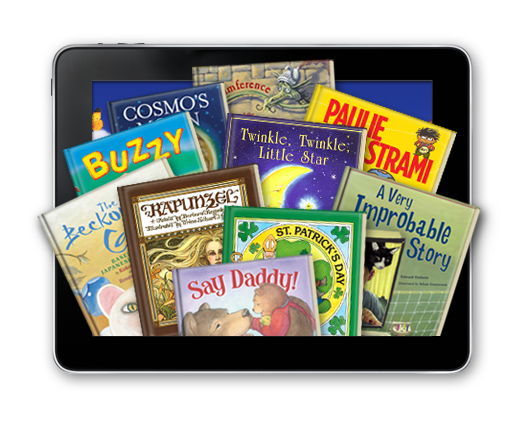We recently released Family Time with Apps: A Guide to Using Apps with Your Kids, a free interactive guide for parents and caregivers. The book features comic strips that parents and children can enjoy together, as well as tips on selecting apps that can help turn screen time into family time. Whether the challenge is preparing for a new experience like starting school, spending more time outside, connecting to distant loved ones, or reading together every day, the guide provides tips on how using apps together can support a child’s learning and development. It is available from the iBook Store.
We’ve invited some experts to share their own perspectives on the scenarios that we explore in Family Time with Apps. We are thrilled to share this tale of snakes in the house by Melina Gerosa Bellows, chief education officer of the National Geographic Society.
I love when my kids are involved in nature. Especially when the nature is outside.
Let me explain. My nine-year-old son Chase is an avid critter inspector and collector. He will spend hours in the woods near our home, flipping over rocks and old logs to discover the scurrying life underneath. When the rocks are heavy, I’m often talked into aiding and abetting. While I try not to squeal, he grabs the snake.
The snakes come home with us, often in one of my Tupperware containers. Then the plan is they are supposed to be transported to a large tank we have in our yard.
But he loved one snake so much, that he’d bring it inside. Into our brand-new, just-moved-into house.
“She’s pregnant,” he told me.
“How do you know?” I asked. After all, this brown snake looked just like all the others to me.
“I can tell by looking at her,” he said definitely.
Then, one morning before school, all hell broke loose. The snake had escaped from its Lego House (did I mention the snake had also moved into a new house?) and was MIA somewhere upstairs.
Our search party spread out and fanned the area, to no avail. My son went to school heartsick that day. I used it as a teaching moment that nature belonged outside and not in. I explained that, if the snake had escaped in its natural habitat instead of under his bed, it would have been perfectly OK.
One month later while cleaning the house, I picked up the basket of dog toys to find a surprise. The snake! And yup, she had, in fact, been pregnant. There were 27 wriggling babies on the floor as proof.
My kids are digital natives, and if there’s one thing my son loves as much as digging up creepy crawlies outside, it’s my iPad. He loves games and learning and downloading new apps without my permission (but that’s a story for another time!). There are so many great digital tools for helping kids engage with and learn about nature, and I’m a huge fan. Right now I’m loving our National Geographic Kids YouTube channel where my son and I can watch age-appropriate penguin and dinosaur videos without my fear of what might be just two clicks away. Digital nature for digital natives is a win-win for me, because my kids can explore outside and then continue to experience it indoors – just without snake babies.
I am certainly revealing my National Geographic bias here, but my house also loves the Great Nature Project. This is a digital space where anyone can contribute photos of organisms they encounter, from anywhere in the world. So if you see a snake, you can snap a picture and upload it. And then you can leave the snake outside where it’s happy! What’s even cooler is that if you’re not sure exactly what kind of snake it is, the Great Nature community can help you identify the species. The photo (along with its date, time, and location) is automatically shared with the online community of scientists at iNaturalist.org, where they can use the photo, combined with the data points, for research. All confirmed organisms on iNaturalist are shared with the Global Biodiversity Information Facility, which collects open-source biodiversity data used by scientists and policy-makers.
As a mom, nothing makes me happier than my kids learning about and experiencing the natural world. It’s even better when they’re also contributing to important scientific work AND not bringing their new pets into the house!
If you’d like some fun ways to get kids active outdoors, look for “National Geographic Kids Get Outside Guide,” available wherever books are sold.
 Melina Gerosa Bellows is chief education officer of the National Geographic Society. She is responsible for the Education & Children’s Media group, including School Publishing, the National Geographic Education Foundation and the National Geographic Bee.
Melina Gerosa Bellows is chief education officer of the National Geographic Society. She is responsible for the Education & Children’s Media group, including School Publishing, the National Geographic Education Foundation and the National Geographic Bee.
Bellows joined National Geographic in 2000 as editor of National Geographic World magazine (now National Geographic Kids). An internationally published best-selling author, Bellows’ most recent books are “Love You, Dad” and “Mother’s Love” for National Geographic Books. Her first book with National Geographic, “Nat Geo AMAZING! 100 People, Places, and Things That Will Wow You,” was published in June 2010. It is the companion book to “Nat Geo AMAZING!”, a 10-part television series that debuted on the National Geographic Channel in July 2010.





